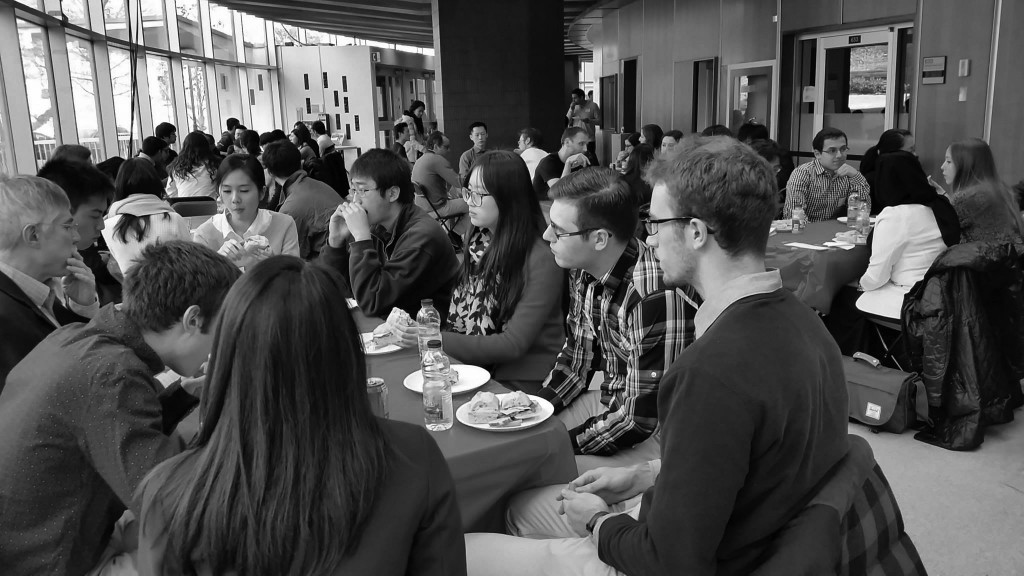On Saturday, Nov. 15, the gap between student and professor narrowed. A variety of biochemical experts gathered on the sixth floor of McIntyre Medical Building to explain their research. Areas of interest were widespread, and included topics such as tumour genetics, eye development, and macromolecular machinery. The students were first invited to listen to brief presentations given by the professors, and then to share lunch with them.
“The goal of RAD [Research Awareness Day] is to expose students to the research that occurs in the biochemistry department and to give them an opportunity to meet professors and discuss [their] research,” explained Larischa DeWet, VP Internal for Biochemistry Undergraduate Society (BUGS).
DeWet helped organize RAD alongside biochemistry professor Jason Young, who explained how undergraduate students could get involved in research. He highlighted that past experience wasn’t necessary; instead, things like commitment, dedication, and interest are what professors will look for.
“I had a student apply to my lab who had never worked in research before,” Young explained. “But he had worked for a pharmacy for something like nine years, and would go every Friday [even] during exams. So when he applied, I called the pharmacy, and they told me he was reliable [and] consistent [.…] He now has a PhD.”
During the presentation, the professors gave advice for students applying for lab positions.
“When e-mailing professors, show interest specifically in what they’re doing,” stated professor Maxime Bouchard, one of the researchers presenting at the event. “We get hundreds of applications from around the world, so make sure you know exactly why you want to work in my lab.”
The different lab positions available to students—showcased by RAD—are extensive. For example, professor Martin Schmeing uses x-ray crystallography to determine the structures of various large macromolecular machines. He chose this route because of the satisfaction from getting instant results.
“You run the experiment, and bam! The results are right in front of you,” Schmeing explained. “Now you have to analyze them, you have to ask questions, you start to interpret what you have.”
The event gave students the opportunity to figure out what type of research they want to pursue. The professor’s presentations demonstrated the huge spectrum available when going into research.
“Students don’t often get to hear about the amazing work that the members of their department are [doing],” explained Alexandr Magder, U2 representative from BUGS. “It’s an amazing experience because it allows students to see the real-world applications of the […] knowledge they [get] from their classes.”
RAD bridged the frequent gap between the student and the professors. It’s a unique event that provides a less intimidating venue for discussion.
“[The] event [helps] demystify what scientific research is all about,” Bouchard explained. “The small group discussions at lunch provide a unique opportunity to understand what scientific research really is.”
Diving into the unknown world of scientific research can be overwhelming. RAD helps connect professors with students to make that much easier.









